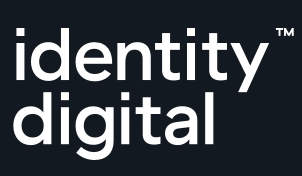Kimberly Michener, Senior Director of Brand & Marketing Communications at Identity Digital, shares her thoughts on how businesses are increasingly using descriptive domains to differentiate themselves from their competition and build better brand recognition.
 In a crowded market, differentiation is key. But with every company touting a unique product or selling point, how can you look to truly stand out?
In a crowded market, differentiation is key. But with every company touting a unique product or selling point, how can you look to truly stand out?
Despite a drive towards differentiation, many brands do not pay the right amount of care to their own domain. Too many are using domains that look similar to competitors. Or, they are using ones with deliberately misspelt, unnecessary additional words (like “GetX” or “helloY”), or even inserting characters. These are difficult to remember, create a disconnect for the user, and have a negative impact on SEO.
Instead, domains should be considered as a significant commercial lever. Indeed, those businesses that are embracing a more modern strategy — eschewing traditional extensions — are the ones able to create immediate and true differentiation in a sea of similarity. Even more, digitally-savvy founders and marketers are using these domains to not just perform better for SEO, but to directly and instantly attract new customers.
How to choose the right domain
As with any branding or marketing exercise, picking the right domain name has to be a carefully considered choice. It’s essential that a business undertakes thorough research and asks the right questions.
In particular, it is key to consider:
- What domains are available that are relevant to your brand?
- Will it help explain and exemplify your business?
- Is the selected domain too long for customers to remember?
- Will your domain name as a whole be distinct from others?
Some brands have had to compromise by using hyphens or prefixes like “get”, “buy” or “eat”, in an attempt to avoid the price tag of their ideal one-word, legacy domain. But descriptive TLDs offer clean and uncompromised domains that not only serve as an internet address but more importantly, a branding tool.
The added value of being instantly recognisable
Descriptive domains are simple, straightforward, and can instantly convey the nature of the business by using meaningful words on both sides of the dot.
This means customers can easily and instantly grasp what your business offers. It also requires less thought and action on the part of the customer when it comes to identifying and finding a brand online. For example, if a travel agency uses the domain extension .travel, the audience will know straight away what your business is about.
The advent of descriptive domains means a business’ URL is now a key branding asset on both sides of the dot. It also means that there is a great deal more flexibility when it comes to finding the precise domain that works best for a brand. In short, new domains are able to combine cost-efficiency with marketing optimisation — a win-win scenario.
Not just for startups
While descriptive domains are increasingly being used by startups who are taking advantage of the benefits of going beyond traditional TLDs, it is not just young companies who are seeing the advantages.
Increasingly, larger companies are making the switch from legacy domains to new, descriptive TLDs to better communicate their branding, purpose, and product. This is notably the case for Amazon (amazon.care) and Vogue (vogue.world), which have leveraged these extensions to better identify or brand themselves.
New top-level domains represent a significant opportunity for brands at any stage of their growth journey to be able to instantly define themselves, achieve better SEO results, and stand out in the market. Those that make the leap now will reap even greater results as descriptive domains become even more mainstream.


